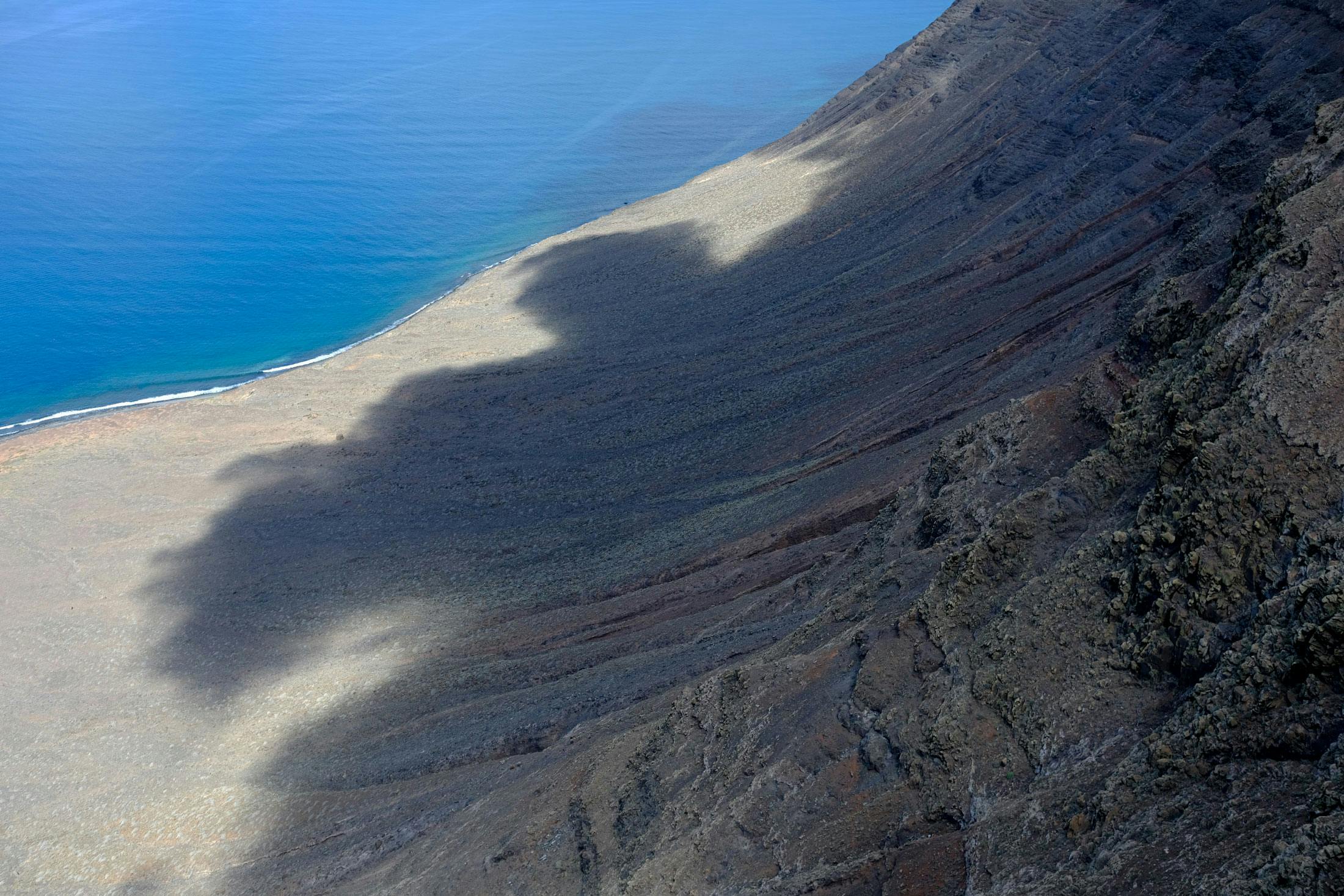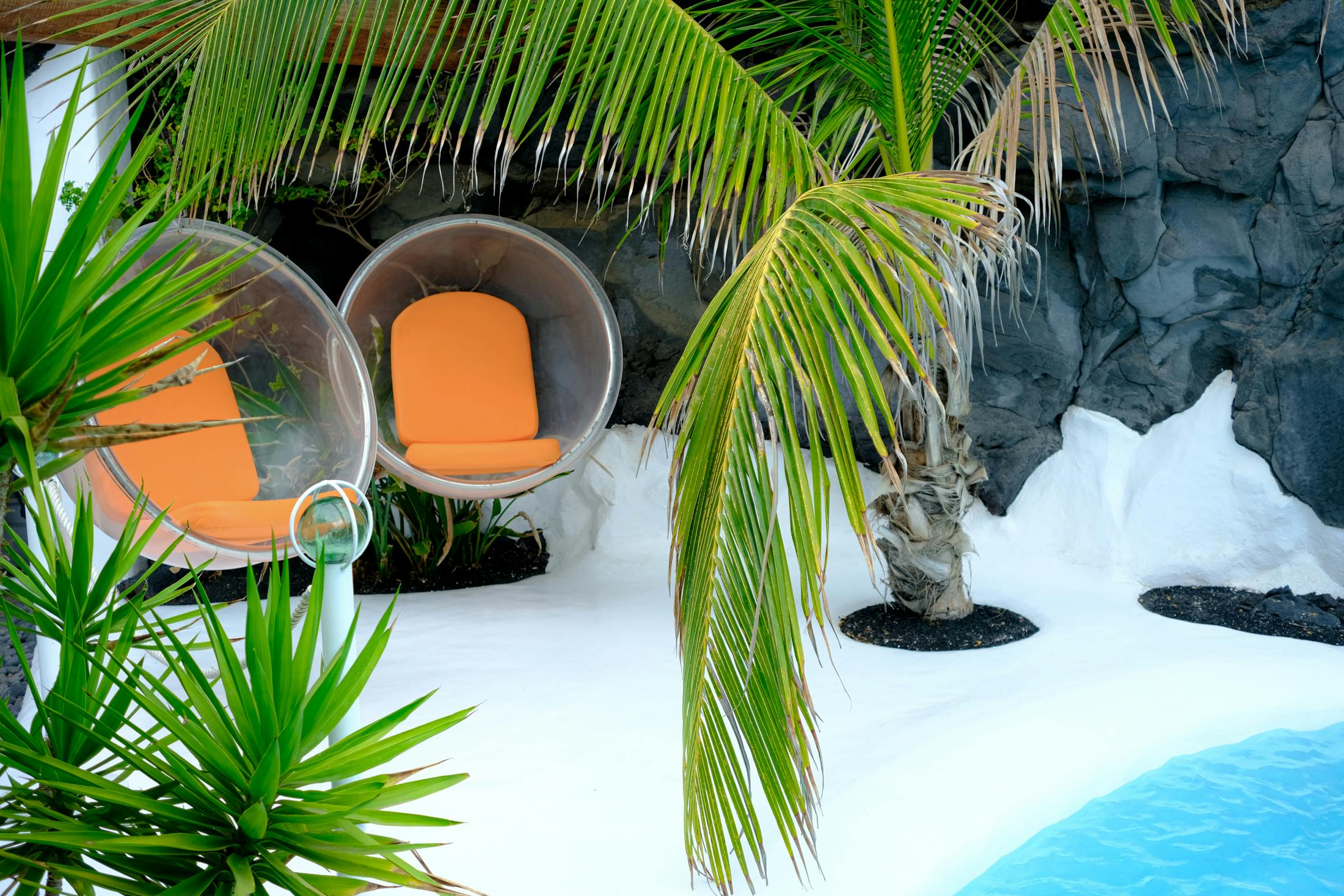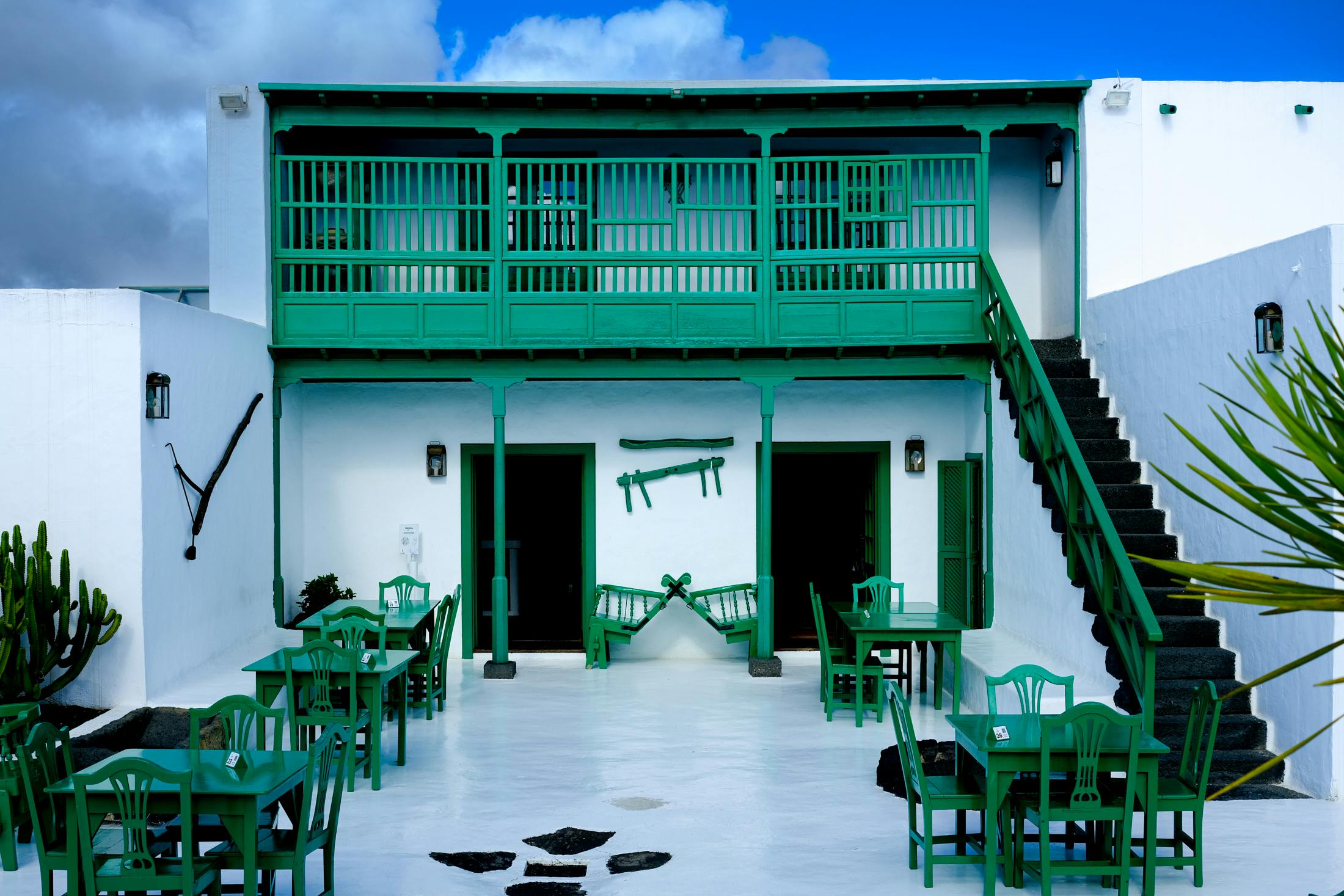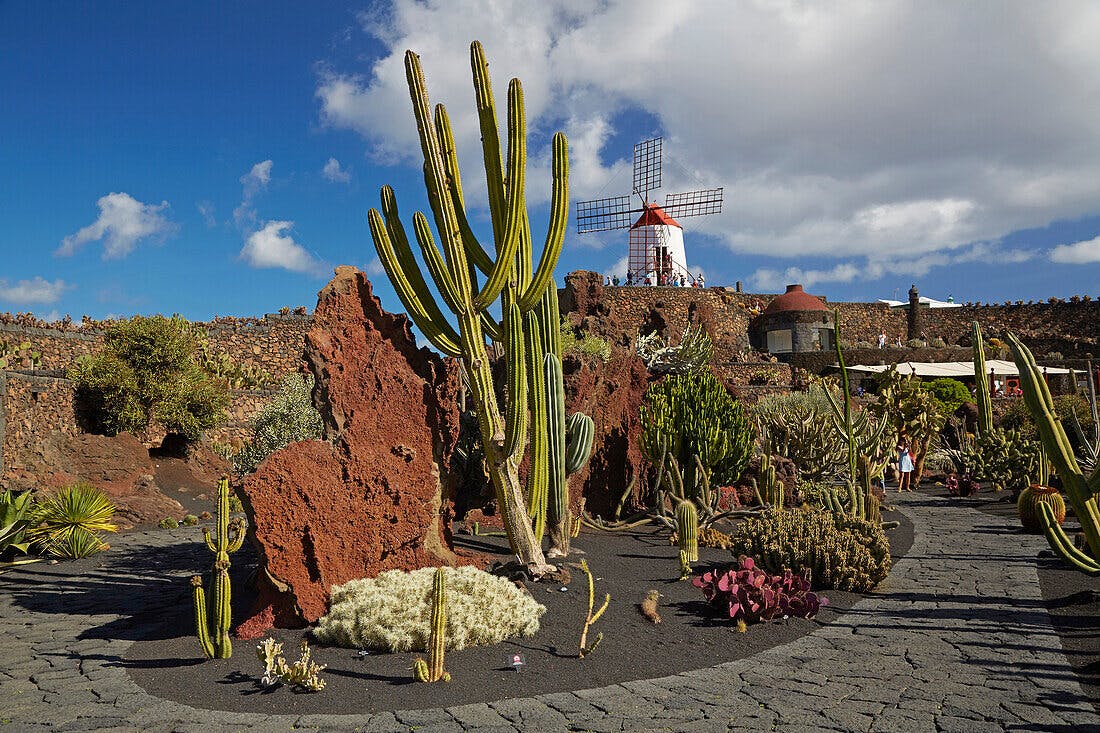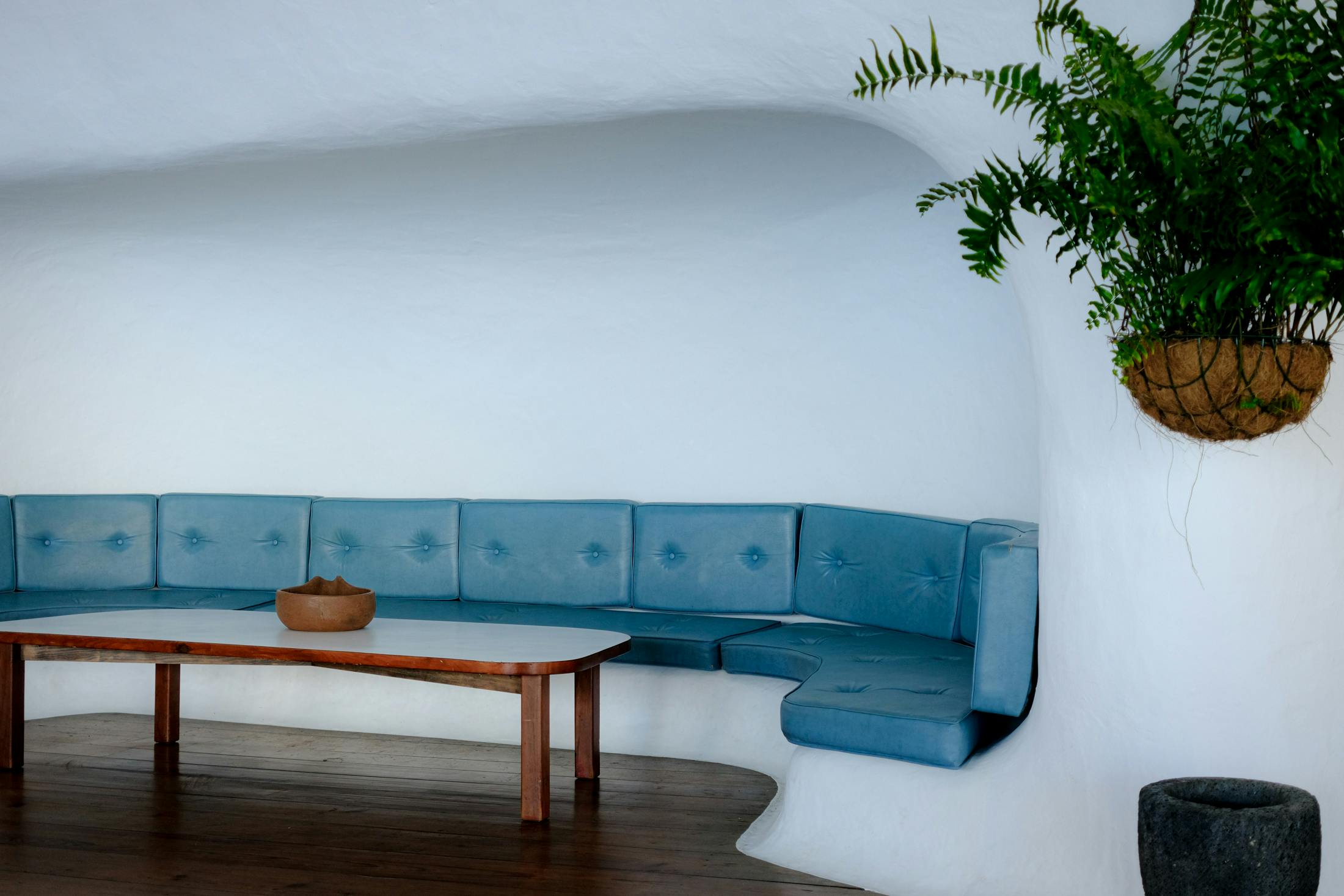
Mirador del Río
Mirador del Río is a viewpoint on an approximately 475-metre-high escarpment created between 1971 and 1973 by the local artist César Manrique, consisting of a balustraded cafe, a shop and a platform at the top which are integrated into the lava rock.
The technical realization of the work was carried out by Eduardo Cáceres and Jesús Soto and it was inaugurated in 1973. Its surroundings have been declared a protected natural area. The building is barely visible from the outside due to being camouflaged under a heavy stone skin that blends in with the environment.
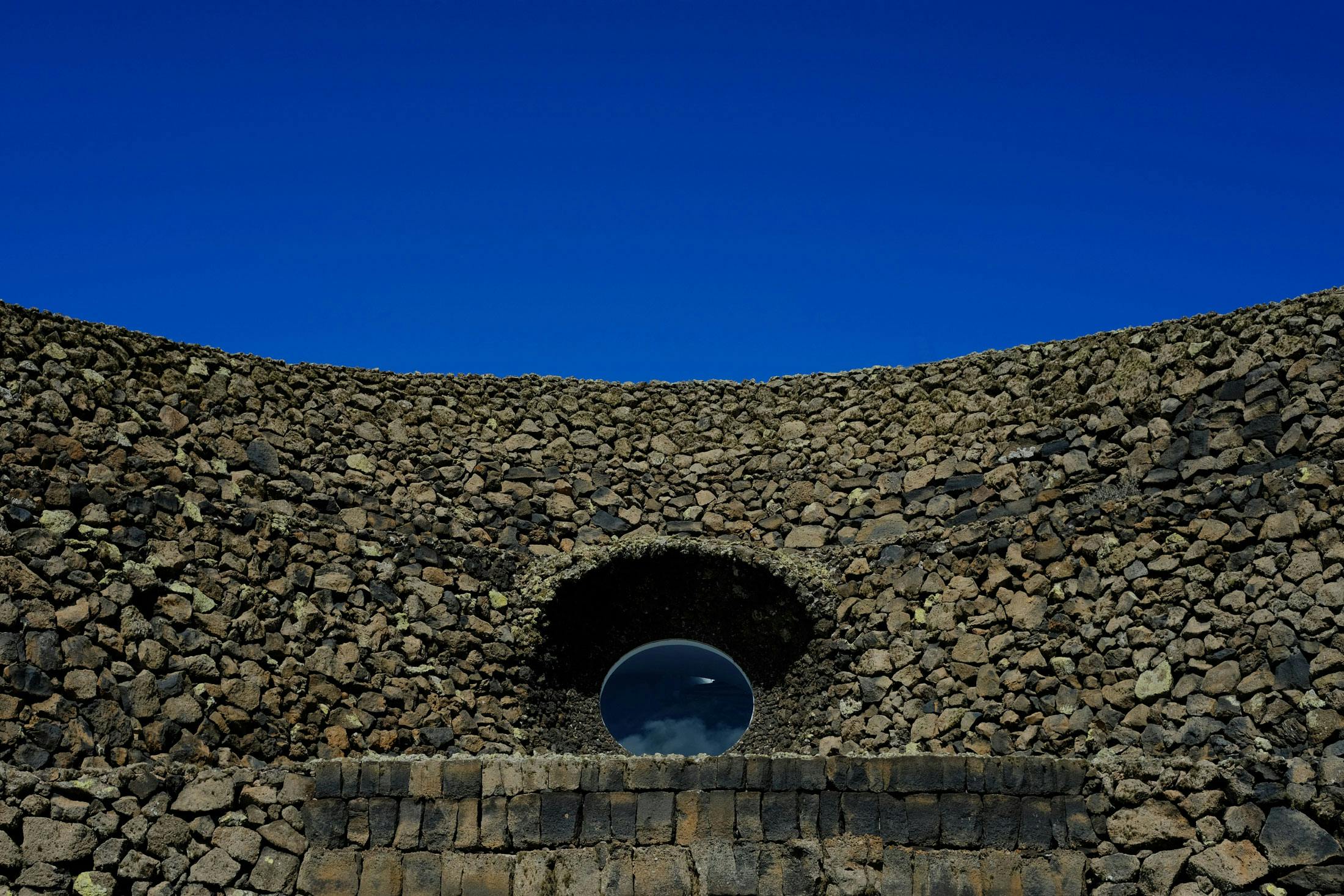
Perched 500 meters above a dramatic cliff edge, El Mirador del Río stands as a sublime testament to César Manrique’s visionary approach to architecture—where art and nature intertwine seamlessly. Inaugurated in the 1970s, this viewpoint offers a panoramic spectacle of Lanzarote and the Chinijo Archipelago, embodying Manrique's signature philosophy: the harmonious integration of human creation into the natural world.
Upon arrival, visitors are greeted by a striking sculpture—a bird and a fish—crafted by Manrique himself. This poetic symbol captures the dual forces of air and water, the two dominant elements that define the surrounding landscape. It is a gentle prelude to the sensory journey that follows.
Crossing the threshold through a suggestively organic entrance, one is immediately drawn to the pair of expansive vaulted windows, which act as the eyes of the structure. Here, Manrique choreographs a breathtaking tableau: the sweeping vistas of the Risco de Famara’s rugged slopes, the narrow strait of El Río separating Lanzarote from the island of La Graciosa, and, in the distance, the stoic volcanic peaks of Montaña Clara, Roque del Oeste, and Alegranza, which, together with Roque del Este, form the Chinijo Archipelago. This archipelago, with its volcanic grandeur and Europe's largest marine reserve, stands as a rare ecological gem.
Inside the Mirador, Manrique’s presence is palpable. Two monumental sculptures and a spiral staircase echo his organic design language, while the café-bar and upper terrace offer further immersion in the landscape. Even the souvenir shop, unobtrusively nestled within, reflects the artist's commitment to ensuring that every aspect of the space coexists harmoniously with its natural surroundings.
The construction, overseen by Manrique in collaboration with Eduardo Cáceres and Jesús Soto, spanned two years. It involved a meticulous excavation of the land, after which the structure was clad in volcanic stone, effectively camouflaging it within the rugged terrain. This careful balance between artifice and nature—concealing the human hand even as it enhances the view—epitomizes Manrique’s enduring legacy as a master of environmental architecture.
